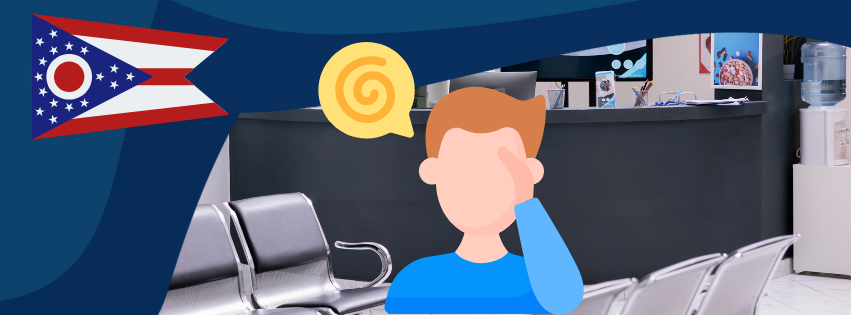Operating a Vehicle under the Influence of Alcohol or Drugs (OVI) is an offense that Courts throughout Ohio and all across the country take very seriously. Not only are there penalties for a first time OVI offense, but the consequences often get worse when the same offender continues to be convicted of OVI, especially if the convictions are within 10 years of each other. The exact penalties imposed in any OVI conviction depend to some extent on factors surrounding the case. However, if an offender repeats OVI, the penalties tend to get worse. Not only are the penalties more intense after the first OVI offense, but the degree of a second or third OVI offense is often more serious than the first OVI. Here, we will discuss the penalties typical for OVIs and how they change for multiple OVIs. As you will see, the length of time in between OVI convictions also can play a part in determining the outcome of the case.
We will focus mainly on adults of legal drinking age driving under the influence of alcohol, but the levels of blood content to be considered under the influence differ for other drugs, as well as for underage drivers. Keep in mind that there may be smaller provisions in the law which are not covered here. Furthermore, when it comes to OVI charges, circumstances, negotiations and decisions by the Judge or Magistrate can slightly change the outcome of a particular case for better or worse, so do not take this information as a guarantee of exactly what will happen if you are charged with OVI. This will however give a pretty accurate idea of how OVI convictions are generally handled.
First OVI Offense
The first time a person in Ohio is convicted of OVI, it is usually a first degree misdemeanor that carries between 3 days and 6 months in jail. The Ohio Revised Code allows Courts to place the offender under community control and send them to the Driver’s Intervention Program instead of jail, depending on the Blood Alcohol Contact (BAC) in the Defendant at the time of the arrest. For a person 21 years of age or older, driving a car with a BAC of 0.08% or higher is illegal and will result in an OVI. However, with a BAC of 0.17% or higher, the offender faces increased jail time and/or doing both the Driver’s Intervention Program and jail time. For a first OVI charge, the associated fines could be as little as $375.00 or over $1,000.00. Typically, a first time OVI carries a driver’s license suspension of 1 to 3 years with possible driving privileges after 15 days. Depending on the privileges, the offender may be required to have an interlock device in the vehicle which requires the driver to breathe under the BAC limit in order to start the engine. The vehicle’s license plates may or may not be restricted. It is possible for the driver’s license suspension to be reduced. The exact outcome of any case depends on many factors in the individual situation.
Second OVI Offense
A second OVI offense in 10 years is still a first degree misdemeanor, but the penalties get more stringent. The maximum amount of jail time stays at 6 months, but the minimum goes up to 10 days. There is also a possibility of house arrest or continued alcohol monitoring. The fines go up as well. Again, a BAC of 0.17% or over leads to potentially more time in jail, house arrest or alcohol monitoring. There is also a requirement for drug/alcohol treatment and immobilization of the vehicle with the second OVI.
Third OVI Offense
With the third OVI offense in 10 years, the jail time goes up to a minimum of 30 days and the minimum fine goes up to $850.00. Again, there is mandatory treatment and time in training programs, and the time under house arrest or alcohol monitoring may go up. The interlock device will likely be required after a third OVI offense. Oftentimes, the vehicle must not only be immobilized but forfeited if it is registered to the offender. A third OVI offense in 10 years is still a misdemeanor, but the level of misdemeanor depends on the factors of the case.
Subsequent OVI Offenses
The penalties for an OVI offense continue to go up as you get more and more within 10 years. If you refuse to take a sobriety test, or if you are tested and found to have a BAC of 0.17% or higher, the test can affect future OVIs for the next 20 years. An offender who commits felony OVI may be facing 60 days or more in prison. Anything above 3 OVIs in 10 years or 6 OVIs in 20 years is a felony. The penalties increase for a second felony OVI no matter how long ago you got your first felony OVI. Remember that OVIs cannot be expunged and are always on your record as we discuss in the following section.
Expungement of OVI is NOT Possible.
As we discuss in our articles on expungement in Ohio, traffic violations are not expungeable offenses. Since OVI is both a criminal and a traffic charge, OVI convictions are also not expungeable. Therefore, previous OVI convictions can affect any future OVI cases, especially if they happen within 10 years of each other.
Conclusion
Hopefully this article helped you understand some of what may potentially happen if you are convicted of multiple OVIs. As we said before, the exact outcome of a conviction may differ slightly from case to case, but you can generally see how the penalties are different depending on the number of OVI convictions. As the number of OVIs goes up, so do the potential penalties. If you are charged with OVI, whether it is your first, second, third or more, feel free to contact the attorneys at Dearie, Fischer & Matthews.





